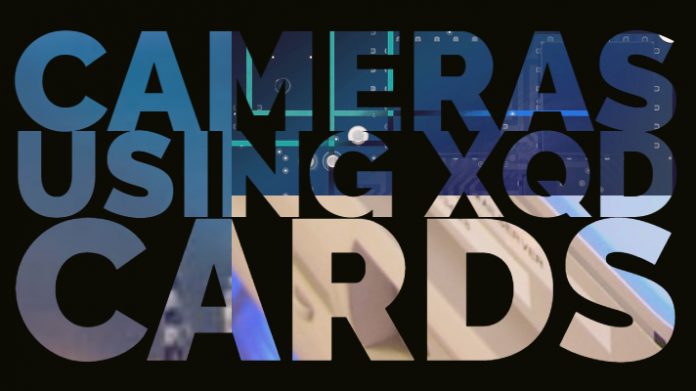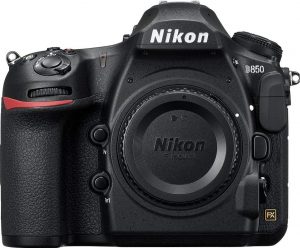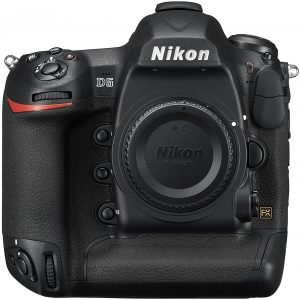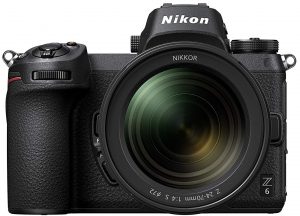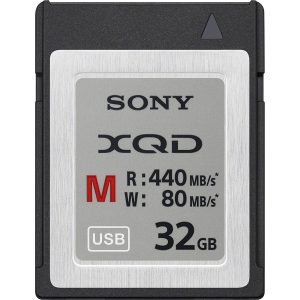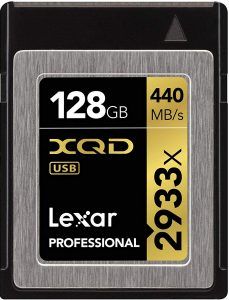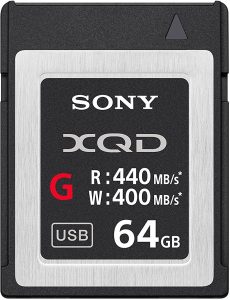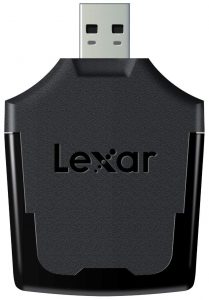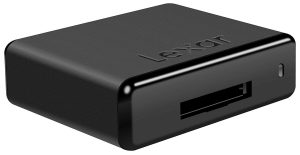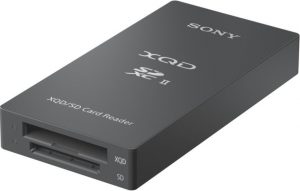The photography arena today has gone through tremendous innovations. The latest in the line up is XQD Cards. Designed to offer excellent read and write speeds and enhanced storage options. But which cameras do support the XQD cards? Let us check out the Cameras using XQD Cards.
XQD Card Format – The History
The need for the new version of the memory card was necessitated because of the focus on high-resolution photography and faster cameras. A considerably higher degree of reading and write speeds along with increased storage was what necessitated the launch of high-efficiency cards.
The new format was first announced by Sony, Nikon, and SanDisk in 2010. However, it remained a possibility on paper for quite an extended period. The final draft on the specifications was announced in 2011. The first XQD card was finally made available in 2012 by Sony. It came with a whopping 1 Gbps of reading and write speeds.
As the development of the XQD cards progressed, there were several new cards launched and offered a read and write speeds of around 400 MB per sec and storage capacity extended to 2 TB.
Cameras using XQD Cards – The List
Well, it was Nikon that brought ahead of the concept of XQD cards. It has already released a good range of cameras that record on an XQD card. Not to be left behind, Sony has announced that its broadcast cameras – XDCAM and XDCAM EX will feature the option for XQD cards.
Some of the best cameras that support the XQD format can be summed as here below –
Nikon D850 (FX)
The full frame camera from Nikon is a high-resolution beast in whatever it performs in. At a time when it is much difficult to find a camera that can offer a high resolution along with a faster speed, Nikon D850 outperforms with the best of both worlds.
Some features that should sweep you off can be –
- FX format, 45.7 MP (46.89 million Pixels) full-frame sensor that can capture every detail of your subject
- Nikon’s F mount
- A speedier 153 point autofocus system (55/15 are available for selection)
- It supports 4K, 1080p, and slow-motion recording
- You have access to a seven fps continuous shoot. You can scale it up to 9 fps with a battery grip
- No optical “low-pass” filter
- Weather sealed design makes it an excellent option for any terrain & climatic conditions.
From the connectivity point of view, the camera comes with Bluetooth Low Energy (BLE) and WiFi options. The Bluetooth connectivity can help you transfer 2 MP JPG versions of your images as you keep shooting. You can even control your camera remotely.
Even with such a high resolution, you will not come across much noise in your shots. The camera has a backside illuminated sensor that improves the light sensitivity considerably.
Nikon D5
One of the flagship cameras from Nikon in the full frame category, it boasts of several features. Launched in 2016, the camera supports the XQD card format for a high-speed functionality.
A few features would include
- 21.3 MP CMOS FX-Format sensor is capable of excellent low-light performance.
- The 153 point autofocus system ensures better and faster performance.
- An unprecedented local ISO sensitivity (ISO 100 to Hi 5) should make it a great option by almost all standards.
- A staggering ISO range for 50 to 3280000 (Native ISO @ 102400) should make it best suited for all lighting conditions.
- You can choose either of the two options – the XQD version for accepting the XQD cards and the one with dual CF card compatibility.
With an instant Auto Focus mode, it should be an exceptional option for your needs for highly professional photographs. It offers an improved alternative for a high degree of customization for shooting at faster speeds.
Ideally, the camera is best suited for those who usually shoot faster action like those in sports photography or for those who need the right kind of light compensation. If you are regularly shooting in the adverse conditions, you can indeed go with the Nikon D5.
Phase One XF IQ4
With a whopping 151 MP resolution, it should be the unparalleled resolution and detail in every respect. Best suited for producing the RAW images beyond what the competitors were able to achieve, the camera should aptly be referred to as World’s first camera with that kind of resolution.
Some of the best features that the camera comes with include
- Support for both XQD and SD card offers you’re the flexibility to choose the format that meets your workflow.
- The backside illumination ensures that you can be assured of a better light sensitivity for your shots.
- It comes with multiple tethering options that include Wireless, Ethernet and USB Type C.
- The expandable and modular design lets you add the additional functionalities to meet your needs.
The camera system is indeed a beast in terms of performance and functions that it offers, and possibly an unmatched one n most respects.
Nikon Z6 – Mirrorless
One of the recently launched Nikon Z6 also comes with support for the XQD format along with its bigger sibling, the Nikon Z7. Of course, both of them started at the same time, and the Nikon Z7 has been somewhat overshadowing the Nikon Z6.
A few specific features include
- An excellent 12 fps burst mode for the best experience.
- 24.5MP BSI Sensor (Backside Illuminated sensor)
- Superior ISO range of 51,200 (Expandable by up to 204,800)
- 273 phase detection AutoFocus system
- It comes with an excellent range of Z mount lenses.
- It comes with in-body stabilization and 4K video compatibility.
To Summarize:
Nikon has indeed been on the forefront of making the XQD card format a popular option for your storage requirements. While their Nikon D850 has been a camera that specially designed for the format, even the previous flagships introduced by the brand have been sporting the compatibility with XQD storage format. A few prime examples can be Nikon D4. Nikon D4S and Nikon D500.
The format is still evolving, and we would foresee a bright future for the file format. With the launch of the cards by several manufacturers has been instrumental in bringing in more awareness about the size. Let us wait and see how does the game unfold in terms an excellent storage option for our cameras.
At this stage, you might have you heard of XQD card format. As we mentioned, it is the new design of the memory cards and is designed to be the existing standards of CompactFlash memory cards. What exactly are these cards and which cards do support the XQD card specifications? Let us check out the details of the new standard in the expandable memory and storage and understand the intricate details involved.
How the XQD Card Evolved?
The major card formats we are used to till now are CompactFlash or CF and Secure Digital or SD. The conglomerate of the memory card manufacturers like SanDisk, Sony, and Nikon, make announcements that they were developing a card format that can support speeds of 500 MB per sec. The cards were supposed to have a storage upwards of 2 terabytes.
The higher resolutions like 4K have been resulting in the need for cards with more memory capacity and data rates. The CompactFlash cards were limited with the speeds peeking out at 167 Mbps. Moreover, CG+F cards tend to consume much space. The camera manufacturers noticed this like Nikon and Sony, and the result was the development of XQD cards that would offer higher transfer speeds and more storage options. Nikon identified the concept of XQD, and they are the first camera manufacturers to come with the support for XQD cards.
The XQD Advantage
The XQD cards offer advantages ranging across three major areas – the storage space, the read speed and write speed. The theoretical write speeds offered by the XQD speeds would be around 1 GB per second. Of course, the possible speeds have not yet reached those levels, but have reached speeds up to 350 MB per second.
Why should you use the XQD memory cards? That would be a valid question. There are not many cameras that come with support for the XQD cards. As things stand of now, it is only Nikon that supports the technology. Even on Nikon – the functionality is available only on the flagship models. However, there is a possibility of using an XQD card reader and other options to introduce the XQD support on the older models as well.
What does an XQD card mean to you? What advantages doe it offer you? If you want to know the technology in a nutshell, here is an excellent compilation of the benefits –
- They can keep up with the shooting speeds of the camera. Thus they can help to clear the buffer in a faster manner
- The increased storage amounts would be helpful enough in storing a host of RAW images that can be processed later on.
- We do not expect any more instances of disruptions in shooting to change the cards when you are into video shooting.
- Faster transfer rates when you are moving the data to your computer so that you can resume your shoots faster
- The cards tend to be durable with their robust design.
Best XQD Memory Cards – Our Recommendations
If you are looking for the best and faster performance in terms of shooting and take full advantage of the excellent features of the Nikon cameras. But, the technology is still nascent, and there are not many options currently available.
Let us check out a few options available if you are checking out the best XQD memory cards.
Sony M Series XQD Card
The card features excellent read and writes speeds of 440 MB per sec and 400 MB per sec respectively. This can be one of the unique options for an efficient 4K video recording. The functionality is designed to avoid the speed degradation to a greater extent.
These cards are designed to be shockproof and antistatic. They also come with unique properties like magnet proof and resistant to breakage. They can even perform at the extreme temperatures. The card is available in 64 GB storage capacity.
Lexar 2933x XQD 2.0 Memory Card
The only XQD memory card from Lexar, the card is available in storage options of 32, 64 and 128 GB capacity. The cards are available with the maximum read capacity of up to 440 MB per sec.
The rugged design ensures you that it will perform under for extreme conditions. The cards come with a write speed of up to 400 MB per sec. The card comes with support for the PCI Express Gen 2 and USB 3.0 interfaces for connectivity. The memory card is resistant to water, temperature, and shock/vibration. The cards come with a lifetime downloadable Image Rescue software to assist you to recover your photo.
Sony Professional XQD G Series Memory Card
Compatible with both PCI Express Gen2 Interface and USB 3.0 interfaces, the Sony Professional XQD G series memory card is best suited for high-speed burst shooting. The card comes with the recessed pins for protection against damage, dust, and electrostatic shock.
The card comes with the Image Rescue software included. Equipped with a five year warranty period, it offers you a read speed of 440 MB per sec and a write speed of up to 400 MB per sec. The cards are designed for reliable and durable use with the robust construction. The G series XQD card from Sony is available in multiple storage options like 32, 64 and 128 GB.
Those were a few memory cards with the XQD technology and offered you excellent performance with the faster performance of the cameras like Nikon 850. The technology is still not in vogue, and it may take a while till the cards are made available in abundance.
Best XQD card Readers in 2018
What if you want to transfer the files from your XQD cards to your computer easily so that you can resume your workflow easily and faster? That is where the memory card readers may come in handy. Let us find a few best XQD card readers.
Lexar Professional XQD Reader USB 3.0
Providing an excellent workflow, the memory card readers let you get back to your task real quicker. It is designed to offer a superb transfer speed at USB 3.0 levels to ensure that you can transfer the files from your XQD card to your computer rather easily.
It can help you transfer your files without any hiccups even when you have loads of RAW images and 4K videos. The card reader is specifically designed for working with XQD 2.0 cards. The convenient and compact design makes it an excellent option for portability. The simple plug and play functionality and the USB 3.0 functionality make it a great choice for almost all your needs. What’s more, the memory card reader is backward compatible and supports the USB 2.0 speeds.
Lexar Professional Workflow XR2 XQD 2.0 USB 3.0 Reader
The memory card can work with effectively with multiple memory cards and thus operates as a versatile card in every respect. The cards support both Thunderbolt 2 and USB 3.0 compatibility.
The Lexar Professional Workflow reader suits all your needs in RAW images, high-res photos, and videos captured in HD, 3D, and 4K video formats. Apart from the XQD cards, the memory card reader can also work with other regular cards like SDHC/SDXC UHS I and UHS-II, CompactFlash UDMA 7, XQD 2.0, CFast and CFast 2.0. It also comes with a two-port USB hub that can be used to plug in USB flash drives, readers, or charge devices. One of the features that would make it a great choice would include the innovative and modular design.
Sony MRW-E90/BC2 XQD USB 3.0 Reader
The card reader is compatible with both XQD series and UHS-II SD memory cards. The interface supports a super speed USB 3.1 Gen 1 standards. You have access to XQD high-speed driver and XQD drive letter recognition through the Sony official website.
It should be one of the excellent choices for all your needs in the high-speed data transfers for providing faster and unhindered workflow requirements. Small and portable to the core, the card reader is useful for a wide range of cards. It is one of those card readers that can read both on XQD cards as well.
The Concluding Thoughts
Well, given the fact that the XQD cards are the future, especially with the focus on the RAW images and 4K resolution. We expect more camera manufacturers following the footsteps of the Nikon 850. If that happens, the XQD memory cards will be in vogue and so would be the need for the card readers used for the purpose.
Have you used any of the XQD memory cards featured in the above compilation? If you have, do share your thoughts, experiences, and opinions concerning these cards with us. Also, share your inputs on the memory card readers used for a streamlined workflow with your XQD cards. If you are aware of any of the XQD memory cards and card readers that support XQD cards, you may share them with us as well.

